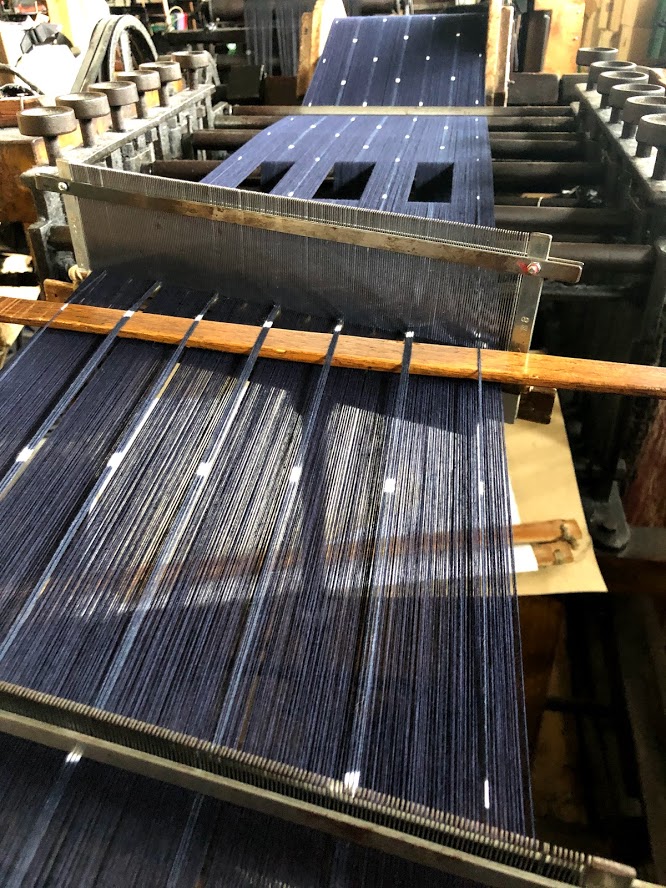
The work of winding the Kasuri yarn and the ground yarn calculated based on the design in a wooden frame called a beam.

In the case of “Tate Kasuri” which makes a pattern only with warp threads, it is possible to determine what kind of pattern can be made in the rough winding process, whereas in “Tate yoko Kasuri”, a pattern can be made by overlapping warp and weft threads. There is a difference that it is not possible to distinguish from the handle.

However, Kasuri craftsmen can still roughly determine what kind of pattern they are trying to make with this experience and intuition.

In the case of the dot pattern as shown in the picture, you can imagine a pattern to be used as an accent to create an overlap between the warp and the weft at the center of the floral pattern or geometric pattern made with the weft.
This is because it is an effective technique for giving a three-dimensional effect to the flat fabric called “Hiraori” by the shade of color.

I think this is a technique that has been handed down from hand to hand by Kasuri craftsmen for many years, so to speak, “Kasuri ism”. This is why Shimogawa Orimono is working on “overseas projects” every year. This is because it seeks to discover and create a pattern composition that goes beyond the limit of “Kasuri ism”, or goes beyond the fixed concept of Kasuri craftsmen.
Shimogawa-Orimono
E-MAIL info@oriyasan.com
URL oriyasan.com
instagram http://instagram.com/shimogawakyozo/
facebook https://www.facebook.com/shimogawaorimono
Twitter @kasuritter
Tumblr kyozoshimogawa
YouTube https://www.youtube.com/channel/UCOZennIqkscFGNJLwnTOyKg